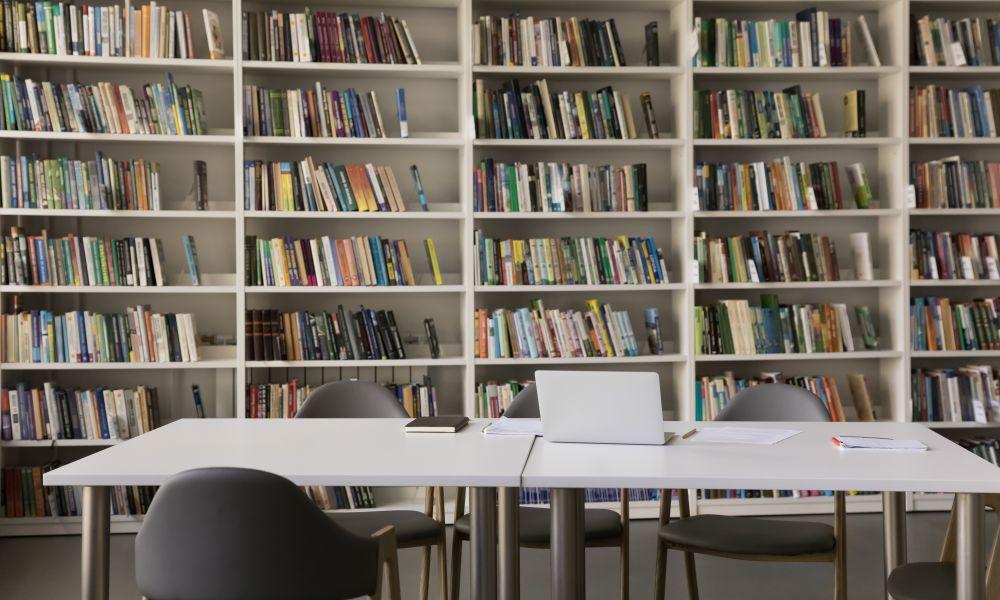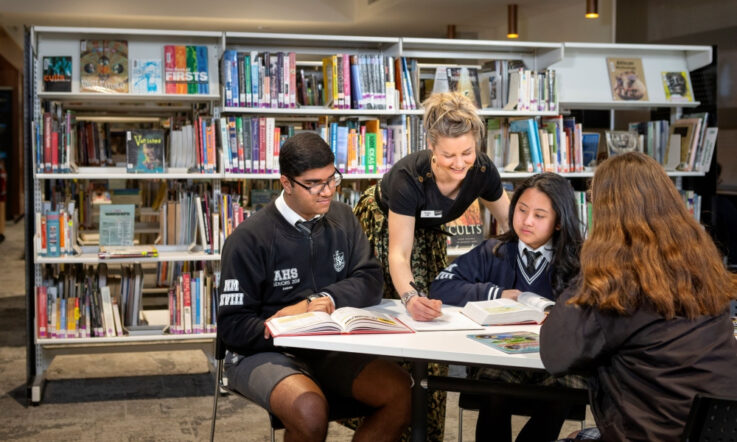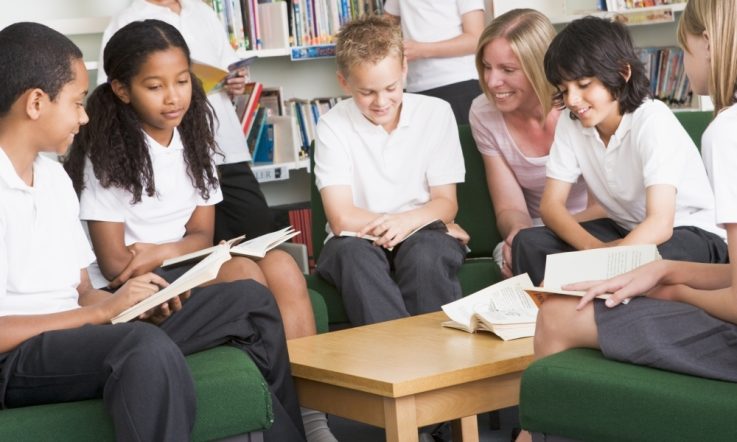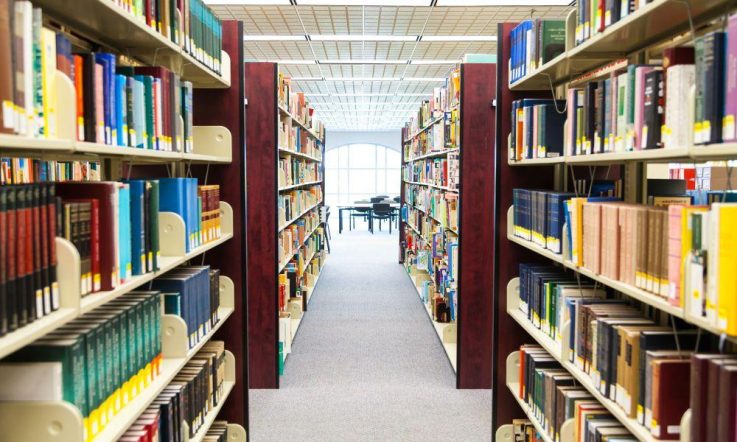Schools across Australia are marking Children’s Book Week this week, and library spaces are at the heart of the celebrations. They’re a hub of expertise throughout the year, supporting teaching and learning.
A new census of school libraries in South Australia (Dix & Van Der Zant, 2025) provides a snapshot of their role and staffing, and highlights significant trends, progress and challenges over the last 5 years.
‘By looking at how school libraries are changing, we consider how they may continue to evolve to support the educational hearts of school and enrich the student experience,’ the report says.
The census was conducted in 2024 by the Australian Council for Educational Research (ACER) on behalf of the School Library Association of South Australia (SLASA), 5 years after the first census in 2019. It involved 671 respondents from all school sectors in the state and collected information on the school library’s role within the school, and details on their resourcing and staffing. Respondents could be library staff, school leaders or other school staff members.
The census report, which is being officially launched today on Australian School Library Day, highlights that libraries in the state have undergone ‘profound change’.
‘Key findings illustrate that library spaces now serve as hubs not only for literacy and information literacy but also for creativity, social connection, wellbeing, and digital fluency.’
Supporting AI and digital technologies
One change highlighted in the report is the impact of artificial intelligence (AI) and other digital technologies. Participants were asked to describe how they anticipate AI will influence the delivery of library-type services at their school. Their responses represented ‘a continuum of attitudes typical of the adoption of any new technology’ with 5 emerging themes: proactive and positive engagement with AI; viewing AI to have minimal or no impact on services; believing it is too early to say; being unsure; and being wary of the impact.
Interestingly, the report concludes that the profile of attitudes is also influenced by the role of the census participant: ‘Principals are more likely to be unsure (28%) or believe AI will have minimal impact on their school’s library services (30%). However, library staff tend to be more proactive and prepared to integrate AI technologies (32%).
‘This tendency for librarians towards early adoption and innovation is well supported in the literature, and it is likely they have been employing AI applications without even knowing it. Teacher librarians have expertise in information and digital literacies, and their universal connections across year levels and subjects positions them well to lead and navigate the use of AI in student learning.’
Census data show that access to e-resources, online book cataloguing services and trustworthy digital information platforms such as online encyclopaedias, became a priority for schools in response to COVID-19.
‘The pandemic accelerated the adoption of digital tools and remote access to resources,’ the report reads. ‘Libraries adapted quickly to support online learning, expanding digital collections and virtual activities.’
Supporting student learning and wellbeing
Research literature reports clear links between well-resourced school libraries and positive student learning outcomes, including reading achievement. The 2019 census showed that students in schools with a qualified teacher librarian had up to 2 months’ learning gain (Earp, 2020).
The 2024 census revealed 92% of schools in South Australia have someone to manage the provision of library and information services in their school (2% fewer than in 2019). Beyond the 8% of South Australian schools that do not have someone to manage library resources, only one-third of schools have managers with a library qualification, either as a teacher librarian (15%) or a library-qualified school services officer/education support officer (18%).
In 2024, 83% of staff report that their library is moderately or completely contributing effectively to student learning, and schools with a library-qualified staff member are more likely to have this belief. The report also concludes that contributing effectively to student learning was positively associated with school libraries that were effectively managed, effectively staffed, effectively funded, well-resourced and current, and valued by the school community.
Census respondents were also asked to describe in what ways their library might support student wellbeing. Common themes included: the library being a calm and inclusive space, having diverse and accessible collections, providing engagement activities for students (for example, lunchtime clubs), and offering flexible spaces for students.
As one principal of a regional secondary school said:
‘The best thing is simply that our school library is a warm inviting safe space that embraces learners of all ages – school or community based – and offers a way to further the learning journey through access to quality resources that are not just the books and digital offerings but the people in charge of the space.’
School library space and funding
Similar to the 2019 results, 47% of school libraries have dedicated space on-site equivalent to 3 or more standard classrooms, 32% are around 2 classrooms in size, 15% are equivalent to one classroom and 5% are smaller than a classroom or have no dedicated space (1%).
‘Funding challenges persist, affecting both staffing and physical infrastructure. Many schools struggle with limited budgets, resulting in inadequate or ageing spaces, insufficient collection development, and limited access to digital resources.’ (Dix & Van Der Zant, 2025)
We’d love to hear how your school library and expert staff are making a difference to student outcomes. Get in touch with the Teacher team to share your success story: teachereditorial@acer.org.
References
Dix, K.L. & Van Der Zant, T. (2025). School Libraries in South Australia: 2024 Census. Australian Council for Educational Research. https://doi.org/10.37517/978-1-74286-777-9
Earp, J. (2020, September 9). Teacher librarians and student literacy. Teacher magazine. https://www.teachermagazine.com/au_en/articles/teacher-librarians-and-student-literacy
Earp, J. (2020, November 19). The Research Files Episode 63: School library census with Dr Katherine Dix. Teacher magazine. https://www.teachermagazine.com/au_en/articles/the-research-files-episode-63-school-library-census-with-dr-katherine-dix
Consider the expertise available in your school setting on AI. Does this include library staff? How could library staff support the integration of AI in your setting?
Does your school library have diverse and accessible collections available? Are engagement activities, (for example lunchtime clubs) on offer?



